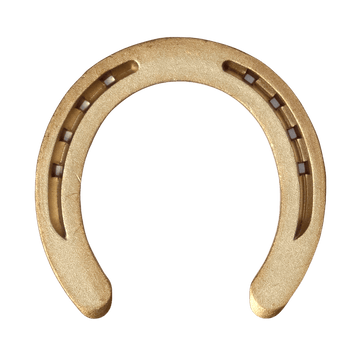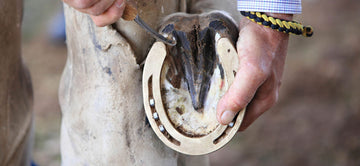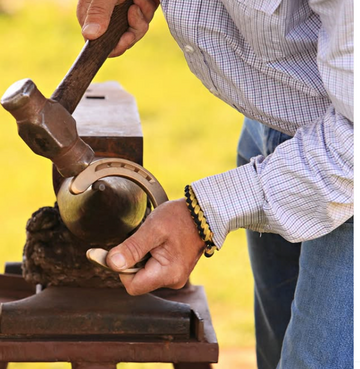Introduction to Dog Ownership
Becoming a dog owner is one of the most rewarding experiences, but it comes with responsibility. Dogs are loyal, loving companions who rely on us for daily care, affection, and structure. Providing a nurturing home starts with preparing for their needs long before they arrive.
Consider factors like breed, energy level, and temperament to ensure the dog you choose aligns with your lifestyle. Puppies, adult dogs, and seniors all require different levels of attention and activity. Investing in essentials like a comfortable bed, leash, collar, bowls, and appropriate food is only the beginning.
Your role also involves creating routines, promoting socialization, and staying proactive about health and safety. Treating your pet as a furry family member is crucial for their well-being and happiness.
With dedication and consistency, you’ll give your dog the happiest life possible while building a strong, lifelong bond as a true member of your family.

Nutrition and Feeding
Providing the Right Food for Every Life Stage
A well-balanced diet is the foundation of a healthy dog. Look for high-quality commercial dog foods labeled as complete and balanced, tailored to your dog’s life stage—puppy, adult, or senior. Puppies require different food compared to adult dogs to meet their specific nutritional needs. Nutrient needs vary with age, activity level, and breed size.
Feed puppies at least three meals a day to support their rapid growth and energy needs. For seniors or dogs with medical needs, consult your vet about meal frequency or special diets. Avoid giving dogs table scraps, especially those containing onion, garlic, chocolate, or fat trimmings, which can cause serious health problems.
When in doubt, speak with your veterinarian to ensure your dog’s nutritional needs are being met with the right mix of protein, fat, fiber, and vitamins.
Hydration and Water
Fresh Water is Vital
Hydration is critical for your dog’s digestion, circulation, and overall health. Always provide fresh, clean water, and clean bowls daily to prevent bacteria buildup. Consider switching to a pet water fountain, which can encourage dogs to drink more—especially helpful for senior pets or dogs prone to kidney issues.
Monitor your dog’s water intake, particularly during hot weather or after exercise. Dehydration can lead to fatigue, dry gums, and even organ issues, so never underestimate the power of proper hydration.

Exercise and Play
Daily Physical and Mental Activity
Dogs need regular exercise to maintain a healthy weight, support joint function, and reduce behavioral issues. Daily walks, fetch sessions, agility courses, and interactive toys can help meet physical needs and prevent boredom.
Tailor activities to your dog’s breed and age. High-energy breeds like Border Collies or Boxers may need an hour or more of vigorous play each day, while older or smaller dogs may be content with gentle walks and play.
Dog parks, hiking trails, and supervised off-leash play offer great opportunities for socialization and energy release. Taking your dog to a dog park can provide an ideal environment for them to run freely, socialize with other dogs, and get the exercise they need.
Avoiding Unhealthy Foods
Toxic and Poor-Quality Foods to Avoid
Dogs should not eat many common human foods, including:
-
Chocolate
-
Onions and garlic
-
Grapes and raisins
-
Xylitol (found in sugar-free products)
-
Alcohol and caffeine
Even frequent use of canned or processed table food can cause digestive upset, pancreatitis, or nutrient imbalance. Instead, offer vet-approved treats or use food puzzles and slow feeders for enrichment and weight control.
Grooming and Hygiene
Brushing, Bathing, and General Care
Grooming helps maintain your dog’s coat health, skin condition, and comfort. Brush regularly to reduce shedding, remove debris, and prevent mats—especially for long-haired breeds. Use a flea comb to detect and remove fleas during routine inspections.
-
Bathing frequency depends on your dog’s breed and activity. Use gentle, pet-safe shampoo.
-
Check dog's ears weekly for odor or redness, which can signal infection.
-
Clip nails monthly to avoid overgrowth, which can affect posture and movement.
Routine grooming also gives you a chance to check for lumps, rashes, or parasites, allowing early intervention if needed.

Dental Health
Daily Oral Care Prevents Disease
Dental disease is one of the most common issues in dogs. Regular brushing with dog-safe toothpaste, along with dental chews and water additives, can reduce plaque buildup and maintain healthy gums.
Signs of dental problems include:
-
Bad breath
-
Bleeding gums
-
Difficulty eating
Schedule professional dental cleanings as recommended by your vet. Maintaining oral hygiene not only prevents discomfort but also reduces the risk of systemic infections affecting the heart and kidneys.
Health and Veterinary Care
Routine Check-Ups and Preventative Medicine
Schedule annual or biannual vet visits for physical exams, vaccinations, and lab work. Regular wellness checks help detect issues like arthritis, diabetes, or parasites early.
Keep a health record of:
-
Vaccinations
-
Medications
-
Allergies
-
Previous illnesses or surgeries
Pet insurance can ease the burden of unexpected expenses, offering coverage for emergencies, chronic conditions, and even dental work depending on the policy.
Safety and Protection
Secure Environment and ID Tags
Always use a leash during walks and ensure your yard is fenced and escape-proof. Microchipping your dog and attaching an ID tag with your contact info is crucial for quick recovery if your dog is lost.
Keep all hazardous substances—cleaners, pesticides, and medications—well out of reach. During social encounters, supervise interactions with unfamiliar dogs and children to prevent aggression or overstimulation.
Training and Socialization
Behavior Building Through Positive Reinforcement
Early socialization teaches dogs to interact calmly with people, pets, and new environments. Training classes reinforce obedience and provide mental stimulation, helping prevent behavior problems.
Focus on:
-
Basic commands (sit, stay, come)
-
Leash manners
-
Crate training
-
House training
Positive reinforcement methods—using treats, toys, and praise—encourage good behavior without fear-based punishment.
Housing and Shelter
Comfortable Resting Spaces Matter
Dogs need a quiet, safe area to rest. A cozy bed, mat, or crate gives your dog a secure place to sleep. Choose a size-appropriate bed and place it away from drafts or high-traffic areas.
If your dog sleeps outside or spends time in the yard, ensure access to a weatherproof doghouse with shade in summer and insulation in winter. Clean bedding regularly to prevent fleas, odors, or skin irritation.
Yard and Outdoor Safety
Outdoor Risks and Solutions
Even in your own yard, safety is essential:
-
Remove toxic plants and dangerous objects like sharp tools.
-
Keep compost and garbage bins tightly sealed.
-
Use a sturdy fence to prevent escape or unwanted wildlife interactions.
Avoid unsupervised outdoor play, especially in unfamiliar areas. Always have clean water and shaded areas available during outside activities.
Emergency Preparedness
Be Ready for the Unexpected
Emergencies happen. Keep a pet-specific first aid kit stocked with:
-
Bandages and gauze
-
Antiseptic wipes
-
Tweezers
-
Digital thermometer
-
Emergency contact numbers
Have a disaster plan in place, including:
-
Where to go in case of evacuation
-
How to transport your dog safely
-
Extra food, water, medications, and leashes in a “go bag”
Consider setting aside an emergency fund or pet insurance policy to cover unplanned vet visits.
Frequently Asked Questions
What is the 3-3-3 rule for dogs?
The 3-3-3 rule outlines a dog’s transition into a new home: 3 days to decompress, 3 weeks to start learning routines, and 3 months to feel fully settled and confident.
How to properly take care of a dog?
Meet your dog’s needs by providing:
-
Daily nutrition and hydration
-
Regular vet care
-
Exercise and play
-
Training and socialization
-
Safe living space
Proper grooming practices, such as regular bathing and nail trimming, along with selecting high-quality dog food, are essential for maintaining your pet's good health.
What is the 7-7-7 rule for dogs?
This lesser-known rule suggests reassessing your dog’s daily, weekly, and monthly routines—ensuring you’re meeting needs for enrichment, health, and training.
What’s the 90/10 rule for dogs?
The 90/10 rule advises that 90% of your dog’s daily calories should come from balanced dog food, with 10% or less from treats or extras to maintain proper nutrition.
Conclusion
Being a responsible dog owner means showing up every day with intention, love, and commitment. From feeding and exercise to grooming and vet visits, every small action builds a foundation for your dog’s health, happiness, and trust in you.
With consistent care, you’ll give your dog the best life possible—and in return, they’ll reward you with unwavering loyalty, joy, and companionship. Use this guide as your daily blueprint for responsible ownership, and your furry friend will thrive in your care.










